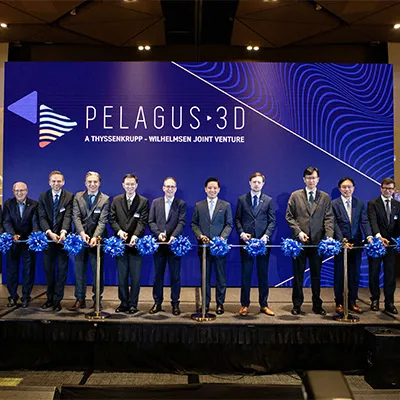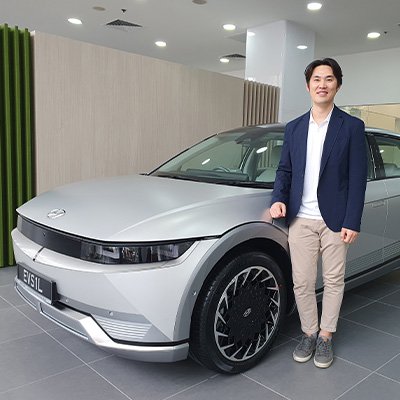It’s been a tough year for Asean's manufacturing sector.
A spate of events has left the factory of the world pressed on all sides — interrupted global supply chain, gaps in distribution channels, and pandemic-related plant shutdowns numbering some of the factors that weigh heavy on the region’s manufacturers. Add to this ongoing trade tensions and fluctuating consumer demand, and you have an industry at its tipping point.
To lead or to lag — that is the question
In response, the sector has raced to accelerate transformation efforts and scale up its adoption of Industry 4.0 technologies. Singapore, for instance, unveiled its Manufacturing 2030 plan earlier this year to drive research and innovation in advanced manufacturing operations. The city state also established the Smart Industry Readiness Index as an international benchmark for the manufacturing industry.
As Asean now emerges from the holding pattern of the past two years, the manufacturing sector will continue to be a key pillar of economic development and recovery. In fact, research by the Boston Consulting Group projects that by 2030, Asean could generate up to $600 billion in additional manufacturing output, and 140,000 new jobs per year if manufacturers capitalise on the opportunities currently available.
However, the question remains — are Asean's manufacturers ready to move up the value chain, and lead as a global hub for smart manufacturing innovation?
A clarion call for transformation
Pre-pandemic, many manufacturers had long drawn plans to transform their manufacturing processes, with roadmaps to Industry 4.0 laid out for the next three to five years. Today, however, many are realising that time is no longer a luxury they can afford — literally so, as delaying their digitalisation may incur significant losses for their operations. As a result, many manufacturers have been forced to do what was once unthinkable — and dramatically compress their transformation timelines to a mere three, six, or 18 months instead.
This rapid pivot to digital has been necessary, with results to boot. Early adopters of modern software and organisations have since been able to tide themselves through significant shifts in the manufacturing landscape. Others, who have fast-tracked their deployment of cloud-based Industry 4.0 technologies, have also found themselves better equipped to innovate and capitalise on growth opportunities in emerging micro-markets, as well as shifts in consumer attitudes.
Smart manufacturing: tools of the trade
Consumers today demand real-time data and visibility and have grown accustomed to having information at their fingertips. Take today’s ride-hailing services as an example — users can now schedule their deliveries, order food as well as plan their transportation options in advance. They can even track the progress of these services from the comfort of their smartphones and are empowered to make decisions at every step of the way.
Industry 4.0 technologies hold a similar promise for manufacturers. As organisations now seek greater visibility over their end-to-end ecosystem, having access to this real-time insight across the manufacturing value empowers business leaders with an overview of their resources at any one point in time. For example, smart sensors on packaging, shipping vehicles, and inventory storage systems, allow manufacturers to gain total and real-time visibility of when materials have been supplied, where products are in the production pipeline, as well as when they are shipped, or have arrived on the loading dock.
Trigger points in these sensors can also aid automation, such as scheduling calibration or part replacement, rerouting work, or, in the case of emergencies, shutting down a production line. The accuracy of these technologies also equips manufacturers to adjust their operations and accommodate any forecasted shifts in the landscape —– agility which is critical in an era of rampant disruption.
Starting the transformation journey on the right foot
As Asean's manufacturers accelerate their transformation efforts, many are fast realising that modernising age-old, tried-and-tested processes is a task easier said than done.
Many have also fallen prey to mindlessly chasing the latest and greatest in technology, without really understanding the business value and ROI these tools provide. Successful transformation goes beyond digitalising for digitalisation’s sake, and requires manufacturers to take a holistic approach to technological adoption.
Firstly, manufacturers need to understand where they fall on the digital maturity curve, taking their people, processes, and technology into consideration. Talent is an often-overlooked aspect in the grander plan of transformation. Having access to the right tools and technologies is moot without an equipped workforce to operate these systems. It is thus critical that manufacturers review their workforce and culture to ensure that they can support the strategy and execution necessary in a new era of business.
Organisations also need to take stock of their current IT infrastructure and refresh their core infrastructure components to ensure they can deliver on new capabilities and business models. Ideally, organisations should run their end-to-end systems and applications on a common digital platform that provides integrated modern capabilities, such as Internet of Things (IoT), AI, machine learning (ML), big data, mobility, and predictive analytics. Equally important is supporting hyper-connectivity — connecting everything from people to applications, devices, data, customers, and suppliers.
It’s now or never
As the adage goes: “The best time to plant a tree was 20 years ago. The second-best time is now.”
We are now in the eleventh-hour, and ASEAN manufacturers have a final opportunity to take action. The challenge is often creating the internal momentum; the first push on the flywheel. If the region is to position itself as a global hub of manufacturing innovation and drive higher value operations, organisations must now gear themselves with the agility, speed, and scale of modern software. This, coupled with its unique conditions for growth, will set ASEAN manufacturers apart, and position them to thrive in a new era of business.
This article was written by Fabio Tiviti, Senior Vice President & General Manager, Asean-India, at Infor.






